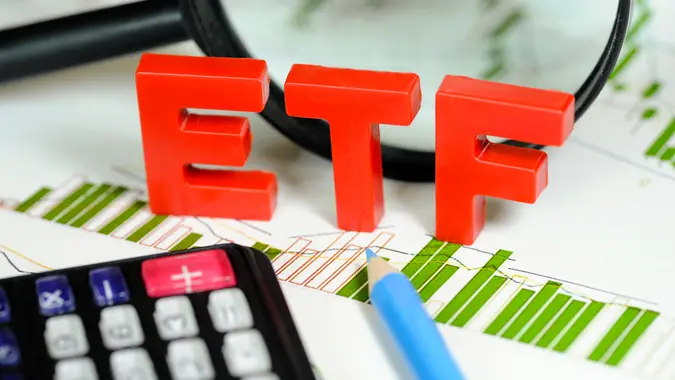Growth at a Reasonable Price: Here’s What Stock Investors Should Know About This Strategy

Commitment to Our Readers
GOBankingRates' editorial team is committed to bringing you unbiased reviews and information. We use data-driven methodologies to evaluate financial products and services - our reviews and ratings are not influenced by advertisers. You can read more about our editorial guidelines and our products and services review methodology.

20 Years
Helping You Live Richer

Reviewed
by Experts

Trusted by
Millions of Readers
There are a million different strategies investors employ in the stock market. The two most well-known are value investing and growth investing. Value investors focus on — you guessed it — valuation of stocks, looking for companies that are statistically cheap, and buying them at bargain prices. One of the most famous advocates of this strategy is none other than billionaire Warren Buffett, CEO of Berkshire Hathaway.
Growth investors, on the other hand, are much less concerned with valuation and instead focus on companies they believe will grow rapidly in the future. Growth stocks often trade at extremely high earnings multiples or might not even have achieved profitability yet. Growth investors are essentially betting that a company’s long-term growth will outperform the stock market’s expectations.
Consider This: Charlie Munger — Why 95% of Investors Have No Chance of Beating the S&P 500 Index
Growth at a Reasonable Price
Growth at a reasonable price, or GARP, is a strategy that tries to split the difference between value investing and growth investing. While GARP investors still look for growing businesses, they place an equal emphasis on not overpaying for that growth — hence the name. This strategy was made famous by Peter Lynch, the portfolio manager for Fidelity’s wildly successful Magellan Fund in the 1980’s.
Just like any other investment strategy, there’s no one cookie-cutter definition of what makes a stock a GARP stock — there’s some judgment involved. However, one of the more popular metrics is the price to earnings growth ratio (PEG). The PEG ratio is a stock’s price divided by its expected earnings growth rate over a specified time period, typically at least a year but often three or five years. Most GARP investors consider a PEG of less than one an indicator of a stock being reasonably priced.
Using a GARP Strategy
While many GARP investors pick individual stocks, there’s an easier way for retail investors to follow a GARP strategy — invest in one of the funds out there that will do the work for you, like the Invesco S&P 500 GARP ETF (SPGP) or the JPMorgan US GARP Equity Fund (JPGSX). These funds do charge a management fee but are a convenient option for more passive investors looking to invest in GARP stocks.
 Written by
Written by  Edited by
Edited by 

























